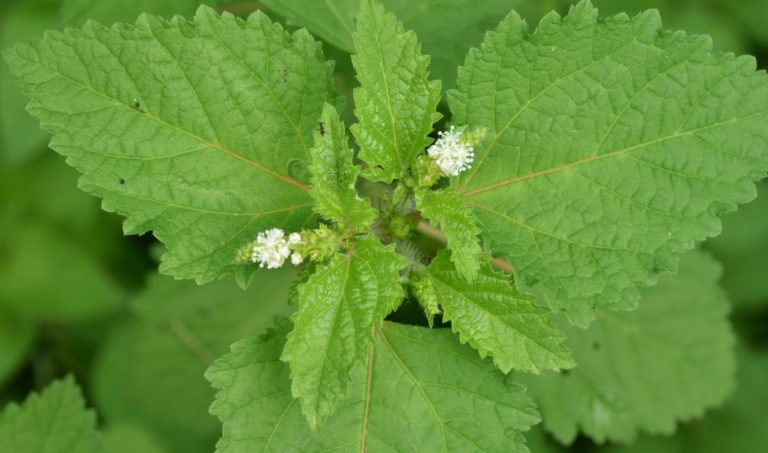
Pogostemon cablin, Benth. labiatae
His origin
The word patchouli comes from Tamil, a South Indian language “paccilai” which means “green leaves”. It is native to the Indo-Malaysian regions and then goes to Southeast Asia, there are many varieties in East Asia and even as far as South Africa.
Of the history
He arrived in France at the beginning of the XNUMXth century via the island of Réunion.
It was first by its smell that the plant was known during the XNUMXth century. But it was above all through the importation of the famous shawls from northern India that made this woody scent fashionable. Indeed, these shawls were impregnated with patchouli to protect them against insects. This perfume was immediately adopted by artists and the English aristocracy, and even became a distinctive sign of Cashmere shawls. Today, the majority of the world's production comes from the Sumatra island in Indonesia.
A bit of botany
Like many Provençal aromatics, patchouli belongs to the Lamiaceae family. It is the leaves that are full of fragrance. They are fragrant and fluffy, covered with secretory hairs. These secretory hairs and their secretory glands convey sugars, glucose and fructose which will become, with the effect of photosynthesis, odorous molecules whose different identities belong to the plant itself. The leaves are large, measuring between 5 to 10cm long and 2 to 4cm wide. They are opposite and alternate on a square stem. Its flowers are white, in the shape of lips, slightly purplish.
Patchouli is also used for its properties. In Asia it is used to treat colds, headaches, nausea from abdominal pain. In Japan and Malaysia it is used as an antidote to the bites of poisonous snakes.
Its mode of extraction
After drying, the main fragrant constituents are formed (patchoulol). Steam distillation of its leaves gives an essential oil with a particularly heavy smell. It is refined in barrels for several months to lose its bitterness and gain woody notes. An extract is also obtained with solvent extraction, which is used more in perfumery, closer to the smell of dried leaves.
In perfumery
Patchouli is used in chypre, woody and oriental. Its camphor, earthy and woody notes are particular. It's definitely a base note, which soaks into clothes leaving its wake for long hours. Its smell is sometimes damp, … It is the most sensual of woody notes. It was very popular during the Belle Epoque and had its moment of glory in the 70s thanks to the hippies on their return from India.
Find this note of patchouli in our gourmet oriental fragrance Noir Délit, sensual and fatal perfume.
Based on research by Tachka Sofer.
Bibliography
The Perfumed Herbarium of F.Ghozland and X. Fernandez, ed. Carrot feather
The perfumes of E. Feydeau, ed. R. Laffont
Natural and cultural history of perfume plants by F. Aubaille-Sallenave, ed. Ibis
Essential oils for your health by G.Roulier, ed. dangles

End of the Virevolte adventure
Do not hesitate to consult the list of our resellers if you wish to buy one of our perfumes.
Julie Desoomer
